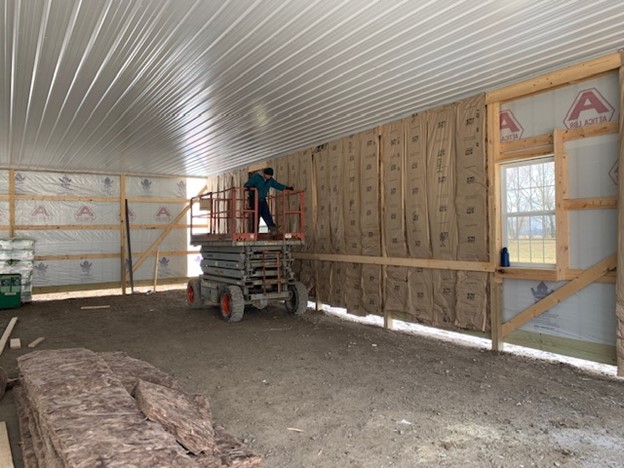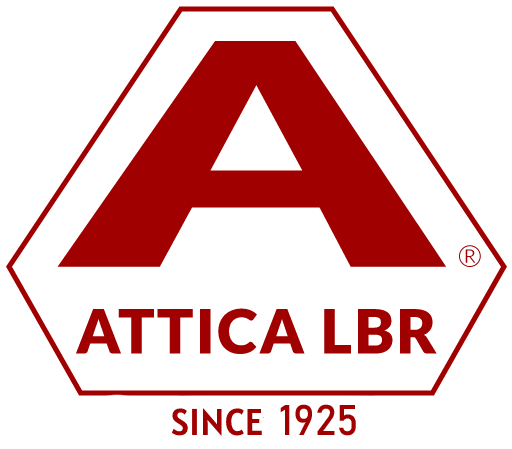Do Insulated Pole Barns Get Hot in the Summer? | Barn Sweating and Moisture
By Jenny Moses
Table of Contents

Insulated pole barns are a popular choice for agricultural and industrial uses, as they offer a cost-effective and versatile building solution. However, one concern that many people have when considering an insulated pole barn is whether or not it will get hot in the summer. While insulation can help to slow down the transfer of heat into the building, it’s important to understand that there are still factors that can affect the temperature inside the pole barn.
The first thing to consider when thinking about how hot an insulated pole barn can get in the summer is the insulation itself. Most insulated pole barns use some form of fiberglass insulation, which is installed between the framing members of the walls and roof. Fiberglass insulation is effective at reducing heat transfer, but it’s not a complete solution. Heat can still enter the building through the walls and roof, as well as through doors and windows.
Fiberglass
Fiberglass insulation is one of the most commonly used types of insulation in insulated pole barns. It is made of tiny glass fibers that are spun together to create a material that is soft and fluffy, yet strong and durable. Fiberglass insulation is effective at reducing heat transfer, which makes it a popular choice for buildings in areas with extreme temperatures.
One of the advantages of fiberglass insulation is that it is relatively inexpensive and easy to install. It can be purchased in pre-cut batts or rolls that are designed to fit between the framing members of the walls and roof. Once the insulation is in place, it provides a barrier that slows down the transfer of heat from the outside to the inside of the pole barn.
However, it’s important to note that fiberglass insulation is not a complete solution when it comes to keeping a pole barn cool in the summer. Heat can still enter the building through the walls and roof, as well as through doors and windows. Additionally, fiberglass insulation can become less effective over time if it becomes compressed or damp.
To get the most out of fiberglass insulation, it’s important to install it correctly. This means making sure that the insulation is cut to the right size and that there are no gaps between the insulation and the framing members. Gaps can allow hot air to enter the building, which can increase the temperature inside.
Another factor to consider when using fiberglass insulation is the R-value. The R-value is a measure of the insulation’s effectiveness, with higher values indicating better performance. The recommended R-value for a pole barn will depend on several factors, including the climate, the size of the building, and the intended use. In general, a higher R-value is better for areas with extreme temperatures, but it can also increase the cost of the insulation.
Roofing
The type of roofing material used on an insulated pole barn can have a significant impact on how hot the building gets in the summer. Some roofing materials are better at reflecting sunlight and heat, while others absorb and retain heat. Here are a few of the most common roofing materials used on pole barns and how they perform in hot weather:
Metal roofing: Metal roofing is a popular choice for pole barns because it is durable, long-lasting, and relatively affordable. It is also highly reflective, which means it can help to reduce the amount of heat that enters the building. However, metal roofing can become very hot to the touch in direct sunlight, which can make the interior of the building feel hot as well. To combat this, some metal roofing manufacturers offer special coatings that can help to reflect even more sunlight and reduce heat absorption.
Asphalt shingles: Asphalt shingles are a common roofing material for residential homes, but they can also be used on pole barns. They are relatively inexpensive and come in a wide range of colors and styles. However, asphalt shingles tend to absorb and retain heat, which can make the interior of the building feel hot in the summer. Some manufacturers offer “cool” shingles that are designed to reflect more sunlight and reduce heat absorption.
Tile roofing: Tile roofing is a durable and long-lasting option for pole barns, but it can be expensive. It is also heavy, which means it may not be suitable for all pole barn structures. Tile roofing is highly reflective, which can help to reduce heat absorption. However, like metal roofing, it can become hot to the touch in direct sunlight.
TPO roofing: TPO (thermoplastic olefin) roofing is a relatively new roofing material that is becoming increasingly popular for commercial and industrial buildings, including pole barns. TPO roofing is highly reflective and can help to reduce heat absorption. It is also lightweight and relatively easy to install. However, TPO roofing can be more expensive than other types of roofing materials, and it may not be available from all suppliers.
When choosing a roofing material for an insulated pole barn, it’s important to consider not only the material’s cost and durability, but also its reflectivity and heat absorption properties. A highly reflective roofing material can help to reduce the amount of heat that enters the building, while a material that absorbs and retains heat can make the interior of the building feel hot and uncomfortable. Additionally, it’s important to choose a material that is appropriate for the size and structure of the pole barn, as well as the local climate and weather patterns.
In addition to the roofing material itself, it’s also important to consider the color of the roofing material. Light-colored roofing materials, such as white or light gray, are generally more reflective and can help to reduce heat absorption. Dark-colored roofing materials, such as black or dark brown, tend to absorb more heat and can make the interior of the building feel hot in the summer. By choosing a light-colored roofing material, pole barn owners can help to keep their buildings cooler and more comfortable during hot weather.
Ventilation
Proper ventilation is essential for maintaining a comfortable and healthy environment in an insulated pole barn, especially during hot weather. Ventilation allows hot air to escape from the building and fresh air to enter, which can help to regulate the temperature and prevent the buildup of moisture and odors.
There are several types of ventilation systems that can be used in an insulated pole barn, including: Ridge vents are installed at the peak of the roof and allow hot air to escape from the building. They are a popular choice for pole barns because they are relatively inexpensive and easy to install. Ridge vents work best when combined with other types of ventilation, such as soffit vents or gable vents, to allow fresh air to enter the building.
Soffit vents are installed under the eaves of the roof and allow fresh air to enter the building. They are often used in combination with ridge vents to create a continuous flow of air through the building. Soffit vents can be effective at preventing the buildup of moisture and reducing the risk of mold and mildew.
Gable vents are installed in the gable ends of the building and allow hot air to escape. They are often used in combination with other types of ventilation, such as ridge vents, to create a cross-flow of air through the building. Gable vents are a good choice for pole barns with high ceilings or steep roofs.
Exhaust fans can be installed in the roof or walls of the building to help vent hot air. They are especially useful in areas where natural ventilation is limited or insufficient. Exhaust fans can be controlled by a thermostat or humidistat to turn on automatically when the temperature or humidity reaches a certain level.
Louvers are slatted openings in the walls or roof of the building that allow air to flow in and out. They are a versatile option for ventilation and can be installed in a variety of locations. Louvers can be adjusted to control the flow of air and can be closed to prevent drafts during cold weather.
When planning a ventilation system for an insulated pole barn, it’s important to consider the size and layout of the building, as well as the local climate and weather patterns. A ventilation system that works well in one area may not be effective in another. In general, a combination of ridge vents, soffit vents, and gable vents can provide effective ventilation for most pole barns. Exhaust fans and louvers can be added as needed to supplement natural ventilation or to address specific ventilation needs.
Other Factors
In addition to ventilation, insulation, and roofing materials, there are a few other factors that can affect the temperature inside an insulated pole barn during the summer months. For example, the orientation of the building can have an impact. If the pole barn is facing directly into the sun, it will absorb more heat than if it’s oriented in a different direction. Similarly, the amount of shade around the building can also make a difference. Trees, for example, can help to reduce the amount of heat that’s absorbed by the building.
One thing to keep in mind is that while an insulated pole barn can get hot in the summer, it will typically still be cooler than an uninsulated pole barn or metal building. Insulation slows down the transfer of heat, which means that the interior of the insulated pole barns will be cooler than the outside temperature. This can be especially important in areas with extremely hot summers, where the difference between the outside temperature and the inside temperature can be significant.
In summary, insulated pole barns can get hot in the summer, but there are several factors that can be addressed to minimize the heat buildup inside the building. Proper insulation, roofing materials, and ventilation are all important considerations, as is the orientation of the building and the amount of shade around it. By taking these factors into account, pole barn owners can create a comfortable and safe environment inside their buildings, even during the hottest months of the year.
Pole Barn Sweating and Moisture Problems Forum https://www.garagejournal.com/forum/threads/condensation-and-humidity-in-pole-barn.398360/
Pole Barn Sweating and Moisture Problems Forum https://www.garagejournal.com/forum/threads/new-pole-building-roof-sweating.131009/
Pole Barn Sweating and Moisture Problems Forum https://talk.newagtalk.com/forums/thread-view.asp?tid=344930&DisplayType=flat
